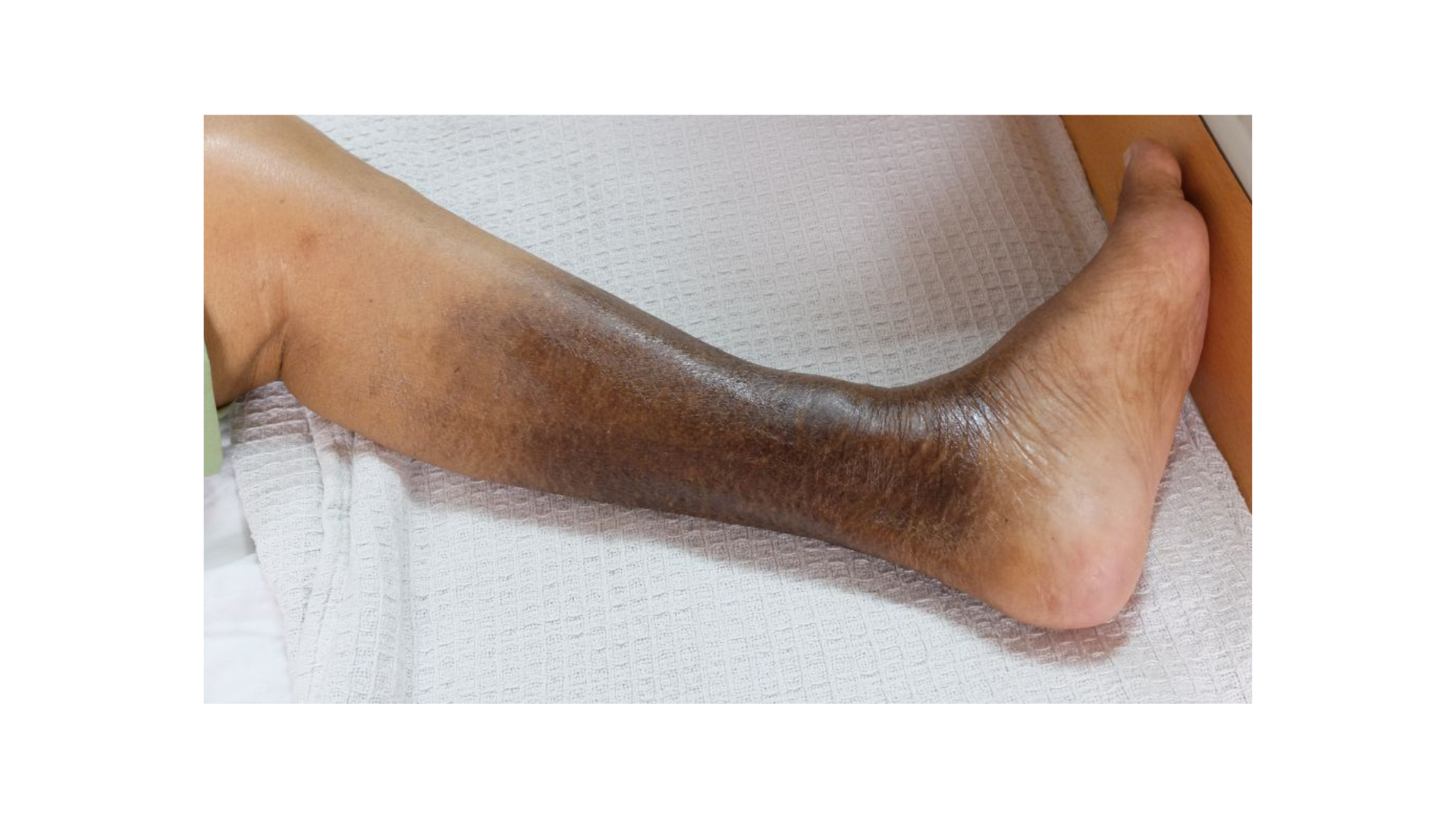A Closer Look at Venous Leg Ulcers and Chronic Venous Insufficiency in Over One Million Medicare Enrollees
April 23, 2024
Edited by WoundSource Editorial Team
Introduction
Approximately 70% of chronic lower extremity wounds diagnosed every year in the United States are identified as venous leg ulcers (VLUs).1 In 2019, VLUs cost nearly 1.1 billion USD for Medicare beneficiaries with VLU as the principle diagnosis.2 In addition, pain, malodorous exudate, and reoccurrence greatly impact patients' quality of life. Research reports varying rates of VLU healing and recurrence among patients, emphasizing the need for effective interventions.2
VLUs and, by extension, chronic venous insufficiency are growing concerns for wound care professionals. As such, it is vital to stay up to date on recent literature published on this condition's impact and management, with an eye towards improving practices and outcomes to break the cycle of ulceration, infection, and remission.2 First, it is important to have an understanding of chronic venous insufficiency, comorbidities, and VLUs.
Chronic Venous Insufficiency and Venous Leg Ulcers: Risks and Treatments
Chronic venous insufficiency (CVI) can be a precursor to VLUs, with untreated comorbidities potentially exacerbating disease progression. Risk factors Tettelbach et al highlighted for VLUs include2:
- Multiple pregnancies
- History of deep vein thrombosis
- Advanced age
- Genetic factors
The above, along with chronic venous hypertension and other comorbidities, are also linked to VLU development. Treatment options for VLUs include compression therapy, wound hygiene, debridement, venous intervention, arterial intervention if indicated, advanced therapies, and infection intervention, with studies demonstrating the efficacy of early interventions such as venous ablation.2
Recent Literature: A Retrospective Evaluation of Medicare Enrollees
A 2023 paper published in the Journal of Wound Care performed a retrospective evaluation of Medicare enrollees with chronic venous insufficiency (CVI) who developed venous leg ulcers (VLUs), focusing on comorbidities, treatment patterns, and resultant outcomes.2 The authors analyzed data taken from the Medicare Limited Data Standard Analytic Hospital Inpatient and Outpatient Department Files from October 2015 to October 2019. Patients with CVI and VLUs were matched into 4 groups based on their treatment regimen. Then, authors documented and compared demographic, comorbidity, treatment, and outcomes data across these groups.2
The evaluation revealed over 1.2 million individuals had CVI. The authors found that 42% of Medicare enrollees with CVI developed at least one VLU during the study period, with a high recurrence rate of 59%.2
They also noted that only 38.4% of VLU instances received documented VLU conservative care treatment. Typically, it appeared therapies such as compression and debridement were implemented after the wound became chronic. This finding was attributed to a “wait and see” approach to wound care.2
The authors also looked at patients who received advanced treatment or high-cost skin substitutes for wounds that did not progress after 30 days. They noted improved outcomes, including reduced rates of infection and emergency department visits, for patients who had weekly or biweekly cellular, acellular, matrix-like product (CAMP) application, according to parameters for use.2
What Do These Findings Mean for Wound Care Professionals?
When standard of care and advanced treatment are implemented early, these authors found that outcomes are better. In chronic VLUs that received advanced treatment, the researchers found an approximate 14 day reduction in VLU length of treatment. In order for practices to be cost effective, the authors recommend that clinicians identify patients at the highest risk. Factors the authors noticed as correlated with VLU chronicity risk included2:
- Wound size
- Infections prevalence
- Medicare dual enrollment
- Number of hospital admissions
- Comorbidities
- Geographical location
It is important for clinicians to look beyond just this one study, as well. For instance, a 2022 review in Wounds agreed regarding the complexity of VLU, and a multimodal, multidisciplinary approach to diagnosis and care. However, unlike the above study, these authors advocated for CTP implementation when VLUs were present for longer than one year.3 Thus, more research is likely necessary to identify the ideal timeline for CTP application in VLU. Accordingly, astute clinical decision-making on a case-by-case basis, using risk stratification as suggested in the Journal of Wound Care study, and consultation of coverage guidelines from local fiscal intermediaries are likely wise.
The piece in Wounds also made an important distinction: venous leg ulcers occur in the leg of a patient with underlying venous disease, but they may not in fact be the direct result of that venous insufficiency.3 This supports the Journal of Wound Care's study authors' advocacy for evaluation of the risk level for the VLU and assessment of any underlying venous disease. By undertaking a comprehensive history, physical exam, testing, and careful consideration of etiologic and risk factors, clinicians can make better treatment decisions to improve outcomes.
Conclusion
The significant burden of VLUs on Medicare patients is clear. Diverse comorbidities and inadequate management contribute to high occurrence rates and subsequent complications. Early identification and advanced treatment may improve outcomes and reduce healthcare resource utilization.2 However, taking other studies into account, more research is potentially needed to determine the ideal CTP application timeframe in VLUs.3 By analyzing real-world data, the authors provide insights into the management of VLUs in a diverse patient population, offering valuable information for health care decision-makers.
References
1. Tan M, Lurie F, Bauza Moreno H, et al. Management of venous leg ulcers. Phlebology. 2024;0(0). doi:10.1177/02683555241243167
2. Tettlebach WH, Driver V, Oropallo A, et al. Treatment patterns and outcomes of Medicare enrollees who developed venous leg ulcers. J Wound Care. 2023;32(11). https://doi.org/10.12968/jowc.2023.32.11.704
3. James CV, Murray Q, Park SY, Khajoueinejad N, Lee J, Ray K, Lantis II JC. Venous leg ulcers: potential algorithms of care. Wounds. 2022;34(12):288-296. doi: 10.25270/wnds/21160. PMID: 36622379.
The views and opinions expressed in this blog are solely those of the author, and do not represent the views of WoundSource, HMP Global, its affiliates, or subsidiary companies.












Follow WoundSource
Tweets by WoundSource